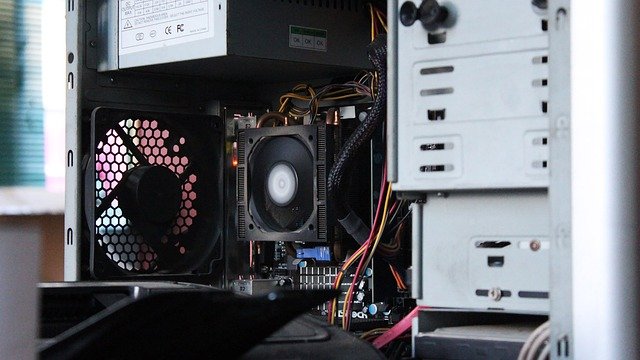How to extend device lifespan through routine maintenance
Regular maintenance helps devices run reliably and reduces the chance of unexpected failures. This article outlines practical, non-technical steps and routines you can apply to laptops and desktop systems to preserve hardware, manage storage, maintain connectivity and peripherals, and reduce repair frequency.

Devices last longer when routine maintenance addresses both hardware and software needs in consistent, manageable steps. A short, steady maintenance habit—cleaning vents, updating firmware, monitoring battery health, and checking storage—keeps performance stable and reduces wear on components such as motherboards, SSDs and displays. This article explains specific actions you can take, how often to perform them, and ergonomic and security considerations that protect your investment and make everyday use smoother.
Laptops, battery and ergonomics
Laptops require attention to battery care and user habits: avoid extreme temperatures, unplug once fully charged occasionally, and keep charging cycles moderate when possible. Use power management profiles to reduce unnecessary cycles and dim displays when practical. Ergonomics matter too: using a laptop stand, an external keyboard, or an adjustable chair reduces strain on users and lowers the likelihood of accidental drops or pressure that could damage the display or internal components. Regularly inspect ports and hinges for looseness or debris to catch issues early.
Hardware, motherboard and cooling
Dust accumulation and poor airflow are frequent causes of hardware stress. Open vents, clogged fans, or obstructed heat pipes cause higher operating temperatures that strain the motherboard and other components. Clean vents and fans with compressed air every few months, replace degraded thermal paste on CPUs if temperatures rise noticeably, and ensure desktop cases have unobstructed intake and exhaust. If you notice persistent thermal throttling or random shutdowns, inspect the motherboard for swollen capacitors or loose connectors and consult a qualified technician for repair if needed.
SSD, storage and upgrades
SSD and storage maintenance focuses on monitoring health, preserving free space, and scheduling backups. Keep at least 10–20% of an SSD free to maintain performance, use built-in health monitoring tools (SMART reports) to watch for early signs of failure, and avoid unnecessary write-heavy workloads. For older drives nearing capacity or showing errors, plan upgrades to newer, higher-capacity SSDs and migrate data using disk-cloning tools. Regular backups—local and cloud—ensure you can recover from drive failures without data loss.
Display, peripherals and connectivity
Treat displays and peripherals gently: clean screens with appropriate microfiber cloths and approved cleaners; avoid harsh chemicals. Inspect cables, connectors and USB ports for wear, and replace frayed or loose cables to maintain reliable connectivity. For monitors, calibrate color and brightness to reduce strain and check for stuck pixels or backlight issues early. Keep a small kit of spare accessories—mice, keyboards, charging cables—so a single failed peripheral doesn’t interrupt work and so you can rotate items to extend their usable life.
Firmware, security and repair readiness
Firmware and software updates often include stability and security fixes that prevent data corruption and reduce repair needs. Apply firmware updates for motherboards, SSDs and peripherals when released by manufacturers, but follow vendor guidance and back up before major updates. Maintain security hygiene—up-to-date antivirus, strong passwords, and disk encryption where appropriate—to avoid malware that can damage data or device configurations. Keep documentation, warranty info and repair contacts in one place so repair or replacement steps are faster and less costly when problems occur.
Cooling, security, upgrades and long-term care
A consistent approach to cooling and periodic upgrades extends device lifespan. Clean fans and filters routinely, consider external cooling pads for laptops under heavy load, and replace worn batteries when capacity drops significantly. When upgrading components such as SSDs or RAM, choose compatible parts and follow static-safe procedures to avoid damaging the motherboard. Balance security measures with performance: excessive background scans can heat and stress devices, so schedule intensive maintenance at low-use times. Regular inspections and modest upgrades keep systems current without unnecessary expense.
Conclusion
Routine maintenance combines simple physical care, sensible software updates, and thoughtful usage habits. Address battery health, cooling, firmware, storage management and ergonomics on a predictable schedule, and maintain backups and repair documentation. These practices reduce unexpected failures, preserve performance, and can delay costly replacements while keeping devices safe and dependable for everyday use.





